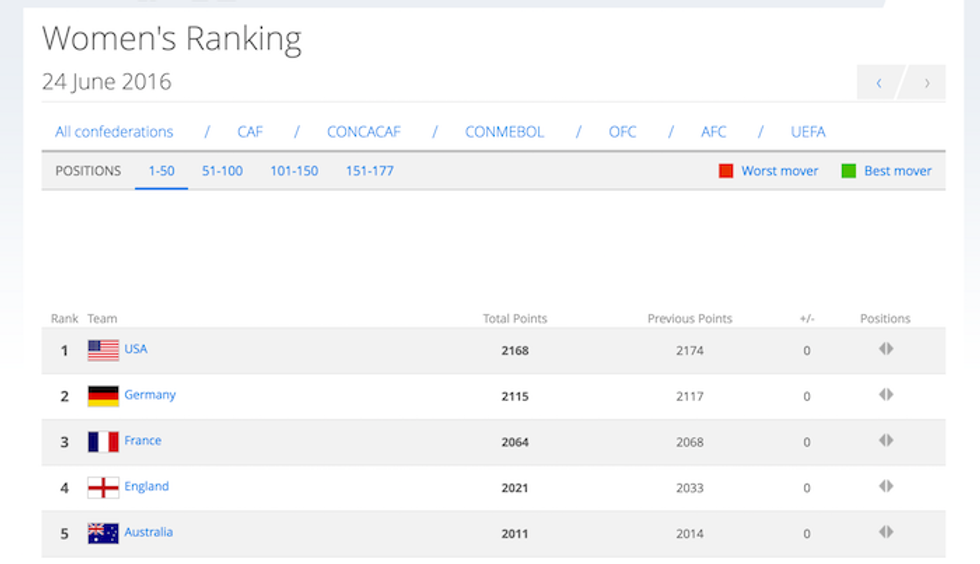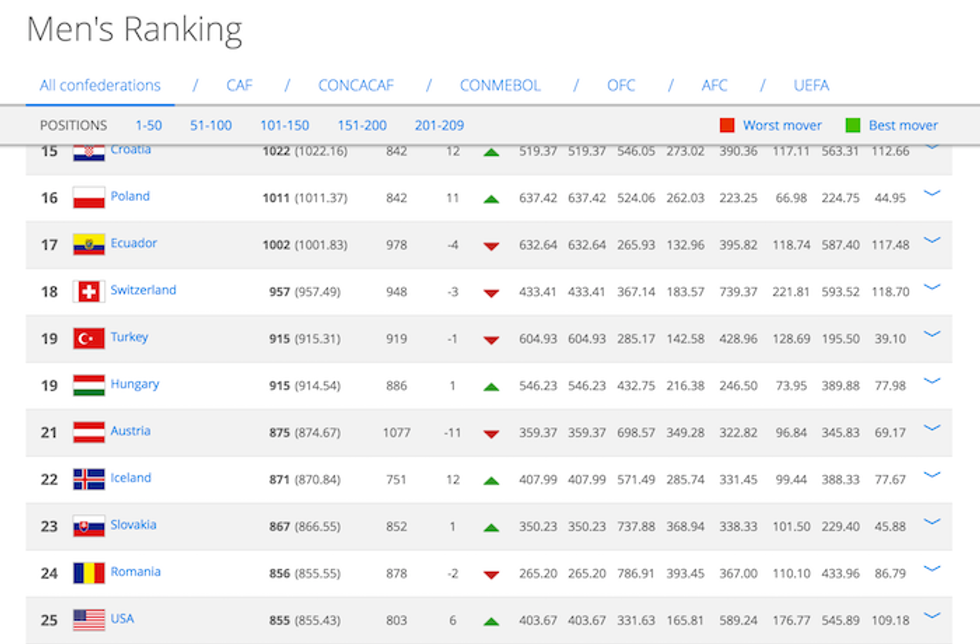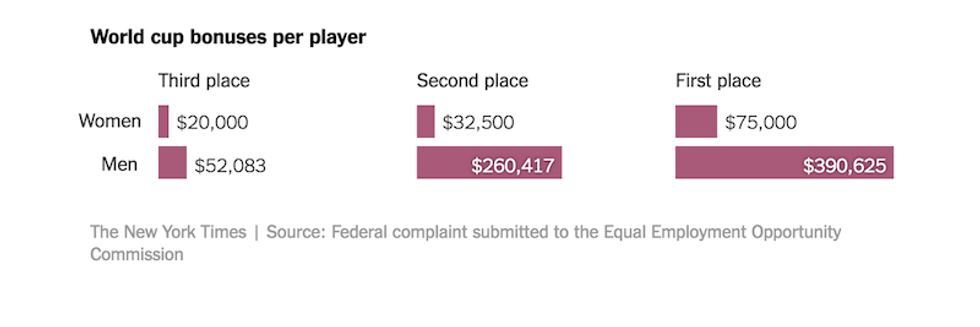Here are some stone cold facts about U.S. Women's Soccer from 2015 that can be researched, validated, and confirmed: $23 million in revenue and $6.6 million in profit was generated by the women's national soccer team. Meanwhile, the U.S. Men's team didn't make it to the $2 million mark in profit, and it's predicted they'll lose more money in profits this year. With those numbers, it's hard to argue in favor of a pay gap that puts the women's team at a disadvantage, which is why players like Hope Solo, Carli Lloyd, and Alex Morgan are filing a wage discrimination action against the U.S. Soccer Federation on the eve of the 2016 Summer Olympics in Rio. This may seem incredible to my most "open-minded" meninists, but the truth comes down to the idea of equal work deserving equal pay. And unfortunately, even reported statistics prove that this concept of fairness isn't working in the U.S. Women's Soccer team's favor.
As of June 24th, 2016, the U.S. Women's Soccer Team is still number one in international rankings.
(FIFA.com)
These rankings include friendlies and tournaments that they have won since their 2015 World Cup victory against Japan. Meanwhile, the U.S. Men's Team has fared significantly lower in FIFA rankings as of July 14th, 2016.
(FIFA.com)
Although the roads to qualifying for the World Cup are different for both teams, the pay disparity for qualification is nearly $40,000 for reaching the same level. According to Andrew Das's article in the New York Times, the $15,000 women earned in 2015 for the world cup required players to play more games yearly. Furthermore, they had to play at peak levels of performance in order to secure wins and maintain that pay rate, while men have a more, dare I say, leisurely pace to attain the $55,000 they got for the 2014 World Cup in Brazil.
To qualify for their respective world cups, both the men's and women's teams must play exhibition games over different periods of time. In order to qualify for the Women's World Cup, the U.S. Women's team needed to play five games successfully over a two week period. Which, if you've ever played the sport, is daunting to comprehend because that leaves little to no recovery time between matches in the most important cup for the sport. On the other hand, men play 16 games over two years to qualify for the World Cup. This gives them plenty of time to not only cultivate their skills for a chance to win the international honor, but it also allows them to play and gain profit for their professional club.
Which, really, appears incredibly greedy when you take into account how much more men are paid than women during exhibition matches. For every game that a male player partakes in during a world cup, they make $5,000. Players on the women's team make less than that, win or lose, but if they win their bonus barely pushes them to make the same $5,000 men make just for participating. If male players win a match, they make $8,166 bonus on top of their $5,000.
(Karen Yourish, Joe Ward, and Sarah Almukhtar at the New York Times.)
With the 2016 Rio Olympics right around the corner, now's as good a time as any to provoke institutional change in sports for the sake of equality between genders. And who knows? Perhaps a feminist victory for U.S. Women's Soccer may transcend and apply to other areas where a pay gap between genders exist. After all, fairness in pay should be dictated by equal pay for equal work. Players for U.S. Women's Soccer––and women everywhere––are putting in the work, so let's see credit where it's deserved.



























